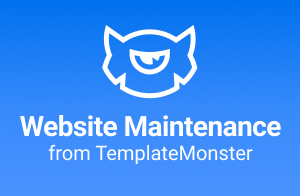
How To Fix Internal Server Error In WordPress
Last modified: April 7, 2020
Websites don’t always work and one of the biggest problems that can happen is that your site has an Internal 500 Error. When you get errors like this with websites, they usually don’t offer you much information. In fact, sometimes you only get a white screen.
When you see an Internal Server Error, it is very rarely a problem with your server. But it is very solvable; here is how.
* This button will show the rest of the post and open up an offer from a vendor
Step One: Turn On Debugging
The first thing to do is to turn on the debugging option on your WordPress website. This allows you to see what is going on.
To do this, go to your site’s wp-config.php file and edit it. You need to find the line that says:
define( "WP_DEBUG", true );
If you can’t find it, you might need to add it to the file. Be sure to save the new version of the wp-config.php file.
Step Two: Reload Your Homepage
Reload your website. This might now show where your error is. If this is the case you can go and fix it. If it is pointing to a specific plugin (which is usually the problem) then you can disable that plugin and the error should go away.
Step Three: Disable All Plugins
If you don’t know where the problem is, then you need to disable all plugins and switch themes. To do this you need to go to the plugins file in your WordPress files, using an FTP client and then change the name of the plugins file to ‘plugins_disable‘. Then immediately rename the file to ‘plugins‘ again.
This will disable all the plugins. Check your website now. It should display, but it will not have many of the features.
You can do the same with the themes.
If you notice your website is back on and displaying, it is a plugin/theme causing a problem. You can switch them on, one at a time, to find out which one is causing the problem. You can do this in the dashboard.
Step Four: The .htaccess File
Again working in the FTP client locate, create a local backup and then delete .htaccess file on the server. If your website starts working, it is because there was an error within the .htaccess file. Now you can start to find out the problem by uploading your local back up and deleting sections.
Every time you delete a section, test your website. If your website works again, that section was causing an error and you can reload the entire file minus that section.
Step Five: Increase Your Website’s Memory
Another common problem is that the memory limit has been exceeded. This seems to be more common with websites on shared hosting. To change this, you need to go to the wp-config.php file through your FTP client.
Then find the line that starts
wp_memory_limit
Change the value after this to 64M.
If that line doesn’t exist, add in the following code.
define('WP_MEMORY_LIMIT', '64M');
This should solve the problem, for a while. However, there could be an underlying issue, such as a faulty plugin that is using all your resources.
Step Six: Final Solutions
There can sometimes be issues which aren’t detectable through the following solutions. If this is the case, you might need to speak to your host or re-install WordPress. But these are last case scenarios.
Don’t Get Frustrated By Your Internal Server Error
Be sure that your website is back up and running as soon as possible using this quick guide to fix an internal server error on WordPress.

 Website Maintenance – Use Promocode: scanwp
Website Maintenance – Use Promocode: scanwp  Advanced JetPlugins for Elementor
Advanced JetPlugins for Elementor  Semrush 14 days trial
Semrush 14 days trial  Kinsta – Managed WordPress Hosting
Kinsta – Managed WordPress Hosting  Bluehost Hosting
Bluehost Hosting